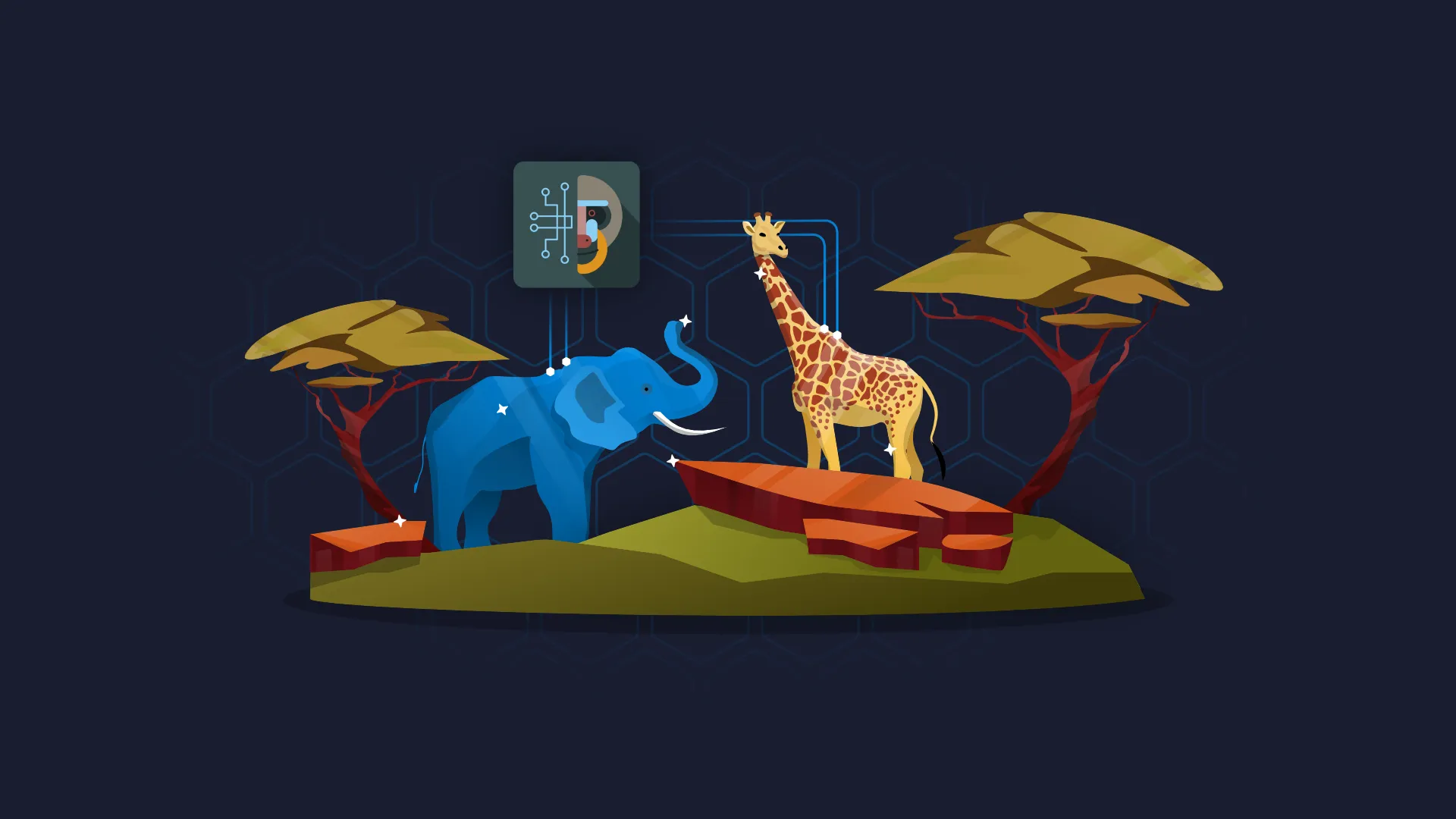Mbaza AI 2.0 Update - Capturing Biodiversity Data with AI

Conservationists are using <strong>camera traps</strong> to capture <strong>biodiversity</strong> data at a large scale. With <strong>AI</strong> and modern <strong>remote sensing</strong> equipment, researchers are gathering species distribution and other ecological data to build a complete picture of biodiversity faster than ever. That's where <strong>Mbaza AI</strong> comes into play.
With Mbaza AI, you can turn massive datasets into accurate insights and reduce months of manual analysis down to days. Whether you're running camera traps live or are sitting on a pile of existing data, this is the solution you've been looking for.
<strong>Mbaza AI is an open-source tool that speeds up the process of classifying wildlife images</strong>.
<h2>Biodiversity and Data Overload - Solving a Global Problem</h2>
Biodiversity is critical in supporting our health, well-being, and planet. But global biodiversity is <a href="https://appsilon.com/applying-ai-to-nature-conservation/" target="_blank" rel="noopener">under threat</a>. More than 40,000 species globally are <a href="https://www.iucnredlist.org/" target="_blank" rel="noopener">threatened with extinction</a>.
Technology offers an invaluable opportunity for preserving natural habitats and species and will play a key role in reaching these targets.
We rely on nature and there are plenty of services it provides daily, from maintaining the planet in a state of balance, increasing the stability and resilience of ecosystems to supporting human health, as well as our economy through e.g. pollination.
Biodiversity conservation is an urgent matter, and immediate action is needed to restore the natural order and mitigate the threats posed by human activity. To achieve this goal, wildlife conservation management aims to halt or reverse the ongoing loss of biodiversity and ecosystem collapse.
<h3>The challenge of monitoring</h3>
But it is virtually impossible to manage what we can't measure, and that’s why biodiversity monitoring has never been more important. With the increasing threats posed by climate change, human pressure, and industrial development, long-term, large-scale biodiversity monitoring programs are essential to track the state of our environment.
<img class="alignnone size-full wp-image-14749" src="https://webflow-prod-assets.s3.amazonaws.com/6525256482c9e9a06c7a9d3c%2F65b01bd3790b9e1ad88c33c6_mbaza-ai-workflow-presentation.webp" alt="Process of manual identification of camera trap images" width="960" height="540" />
Fortunately, advancements in technology offer unprecedented opportunities for biodiversity conservation. One technology that has become the <a href="https://appsilon.com/ai-for-wildlife-image-classification-appsilon-ai4g-project-receives-google-grant/" target="_blank" rel="noopener">gold standard in monitoring</a> efforts is camera trap imaging, which involves automatic photography of animal species in the wild. This technique enables accurate monitoring of vast areas of land at an unprecedented scale. However, the data generated by these devices is enormous, making analysis by humans alone incredibly challenging.
<h2>How to Use AI in Biodiversity Conservation (hint: Mbaza AI)?</h2>
A major challenge facing all large camera trap studies is labeling (or identifying) the species detected in images. Hypothetically, we’re able to capture an unlimited amount of picture data. We have the technology; enough photo traps left in the wilderness for a couple of months will gather hundreds of thousands of pictures. Unfortunately, humans just can't handle that volume of data quickly and accurately enough to make it useful.
But Mbaza Ai can.
<img class="alignnone size-full wp-image-18099" src="https://webflow-prod-assets.s3.amazonaws.com/6525256482c9e9a06c7a9d3c%2F65b01bd42829666b5909f938_mbaza-ai-banner.webp" alt="Mbaza AI - AI-Powered Wildlife Camera Trap Image Classification" width="1600" height="583" />
Mbaza AI simplifies the process of analyzing images from camera traps to monitor biodiversity and helps scientists and conservationists focused on wildlife monitoring and protection.
<h2>What is Mbaza AI?</h2>
Mbaza is an open-source AI algorithm that allows rapid biodiversity monitoring at scale. No internet connection is required.
<h3>Mbaza AI offers</h3>
1. Field readiness & performance optimization
Mbaza AI and the desktop application are designed for remote locations (works offline) and optimized for windows and legacy hardware. No need to upgrade to the latest (and most expensive) equipment.
2. Reduced errors
By automating biodiversity monitoring, with up to 96% accuracy!, users can quickly identify and respond. Identification of hard-to-classify images (for humans) is also improved.
3. Accelerated processing times and cost savings
Users turn what used to be weeks of data processing down to hours of computational processing!
<h3>What are the unique aspects of Mbaza AI?</h3>
1. Mbaza AI is open-source and free to use.
2. It is designed for remote locations and works offline.
3. It is optimized for Windows and can be used with legacy hardware.
In short, it checks the boxes of a field researcher's requirements. Save costs (both time and monetary) and allocate them where they are needed most - the research.
<h3>Who uses Mbaza?</h3>
Mbaza has been successfully deployed and implemented in Gabon to accelerate wildlife research in the Lopé-Waka national parks. An international team of camera-trapping experts developed a methodology for multi-species monitoring and deployed over 200 camera traps across thousands of square kilometers of forest and forest-savanna mosaics.
<h2><img class="wp-image-17688 size-thumbnail aligncenter" style="font-size: 16px;" src="https://webflow-prod-assets.s3.amazonaws.com/6525256482c9e9a06c7a9d3c%2F65b01bd544295a0f33218213_Mbaza-AI-Gabon-D4G-150x150.webp" alt="Mbaza AI Gabon Icon" width="150" height="150" /></h2>
<h2>Mbaza AI 2.0 Updates</h2>
Last September, we released v2.0 of Mbaza, a long-awaited update with many improvements. It is twice as fast as the previous version, yet still maintains an accuracy of up to 96%. On a standard Intel i5 laptop running Windows, it can classify images at a rate of 10,000 per hour.
Installation is now simpler than ever. Additionally, we added a responsive grid layout for the observation explorer, making it easy to quickly analyze data and make corrections to labels if necessary.
To sum it up, if you've already used Mbaza AI 1.0, you'll love it even more. If you haven't tried it yet, don't wait any longer. And if our models can't classify your dataset, <b><a href="https://appsilon.com/data-for-good/#contact" target="_blank" rel="noopener">let's talk</a>!</b>
<h2>Where to Download Mbaza AI?</h2>
Mbaza AI is open-source and free to use. You can download and explore Mbaza AI today and begin using your data for good!
If you need assistance with your project or have suggestions on how to improve, please feel free to reach out!






